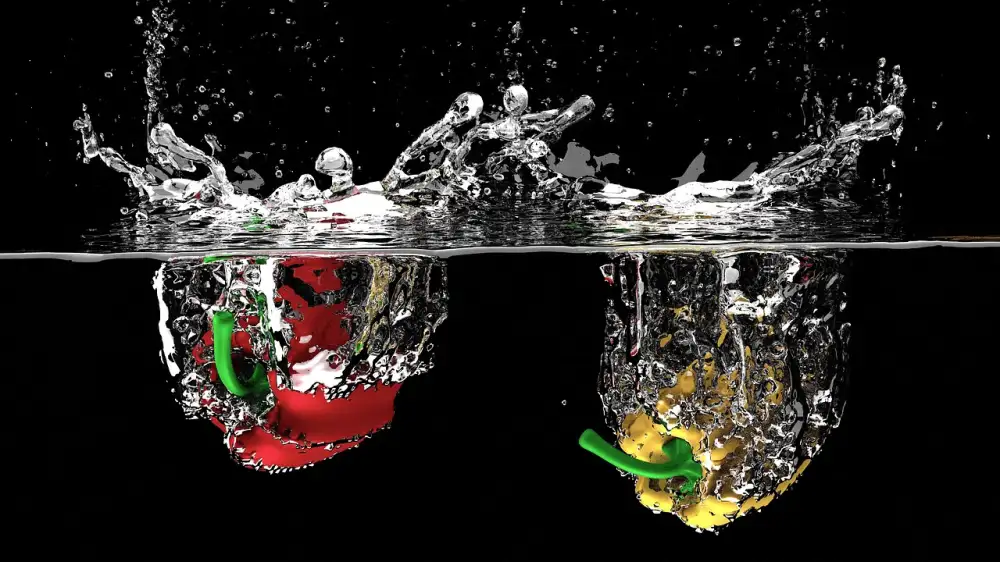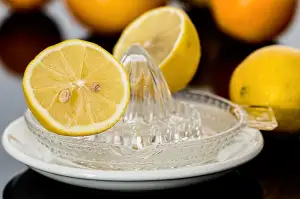Ultimate Guide: How to Clean a Cast Iron Pan Like a Pro

- Gather materials: coarse salt, sponge, dish soap, paper towels, and a towel.
- Let the pan cool down after use to avoid burns.
- Sprinkle salt on the pan to act as a gentle abrasive.
- Use a sponge to scrub off food residue and rust spots.
- Rinse the pan under warm water.
- Avoid using soap, but if necessary, use a small amount and rinse thoroughly.
- Dry the pan with paper towels.
- Place the pan on the stove over low heat to ensure complete drying.
- Store the pan in a dry place to prevent rusting.
Gather materials: coarse salt, sponge, dish soap, paper towels, and a towel.
To clean a cast iron pan like a pro, it's essential to gather the right materials beforehand. You will need coarse salt, a sponge, dish soap (optional), paper towels, and a towel. These items will help you effectively remove food residue and maintain the quality of your cast iron pan for years to come. Having these materials on hand will make the cleaning process much smoother and ensure that your pan remains in top condition after each use.
Let the pan cool down after use to avoid burns.
After using your cast iron pan, it's crucial to let it cool down before cleaning to prevent burns. Cast iron retains heat well, so even after removing it from the stove, it can remain hot for a significant amount of time. Allowing the pan to cool down also makes it easier to handle during the cleaning process. So, resist the temptation to start cleaning right away and give your pan some time to cool off completely before moving on to the next step.
Sprinkle salt on the pan to act as a gentle abrasive.
After letting your cast iron pan cool down, sprinkle a generous amount of coarse salt onto the surface. The salt will act as a gentle abrasive, helping to loosen any stuck-on food particles or rust spots. Using a sponge, scrub the pan in circular motions, focusing on areas that need extra attention. The salt will help lift off debris without damaging the seasoning of the pan. Be sure to rinse off all the salt before moving on to the next step in cleaning your cast iron pan.
Use a sponge to scrub off food residue and rust spots.
To effectively clean a cast iron pan, use a sponge to scrub off any food residue and rust spots. The coarse salt will act as a gentle abrasive while the sponge helps to lift off any stuck-on particles. Be sure to scrub gently to avoid damaging the seasoning of the pan. This step is crucial in removing any leftover bits of food or rust that may have accumulated during cooking.
Rinse the pan under warm water.
After scrubbing off any food residue and rust spots with the salt and sponge, it's time to rinse the cast iron pan under warm water. The warm water helps to remove any remaining salt and loosened particles from the surface of the pan. Be sure to use a gentle stream of water to avoid splashing and ensure thorough rinsing. This step is crucial in preparing the pan for drying, as any leftover salt or debris can affect the seasoning of the cast iron.
Avoid using soap, but if necessary, use a small amount and rinse thoroughly.
Avoid using soap when cleaning your cast iron pan, as it can strip away the seasoning that gives the pan its non-stick properties. However, if you find that there are stubborn residues that won't come off with just salt and water, you can use a small amount of mild dish soap. Be sure to rinse the pan thoroughly to remove all traces of soap, as any residue left behind can affect the flavor of your food and potentially damage the seasoning of the pan. Remember, less is more when it comes to using soap on cast iron cookware.
Dry the pan with paper towels.
After rinsing the cast iron pan under warm water, it's time to dry it thoroughly. Grab a few paper towels and gently wipe the pan inside and out until all moisture is removed. Make sure to pay extra attention to any crevices or corners where water may be hiding. Drying the pan completely is essential to prevent rusting and maintain its seasoned surface. Once you've dried the pan with paper towels, it's time for the final step in the cleaning process.
Place the pan on the stove over low heat to ensure complete drying.
After drying the cast iron pan with paper towels, it is essential to ensure complete drying to prevent rusting. To do this, place the pan on the stove over low heat for a few minutes. The gentle heat helps evaporate any remaining moisture, leaving the pan thoroughly dry. Be cautious not to leave the pan unattended or use high heat, as this can damage the seasoning of the pan. Once completely dry, remove the pan from the stove and let it cool before storing in a dry place. This step ensures that your cast iron pan remains in optimal condition for future use.
Store the pan in a dry place to prevent rusting.
To prevent rusting and maintain the seasoning of your cast iron pan, it is crucial to store it in a dry place. Moisture is the enemy of cast iron cookware as it can lead to rust formation. After cleaning and drying the pan thoroughly, store it in a well-ventilated area away from any sources of moisture. Avoid stacking other items on top of the pan to allow proper air circulation. Additionally, you can place a paper towel inside the pan to absorb any excess moisture and help prevent rust from developing. By storing your cast iron pan in a dry environment, you can ensure its longevity and cooking performance for years to come.
Published: 07. 03. 2024
Category: Home



